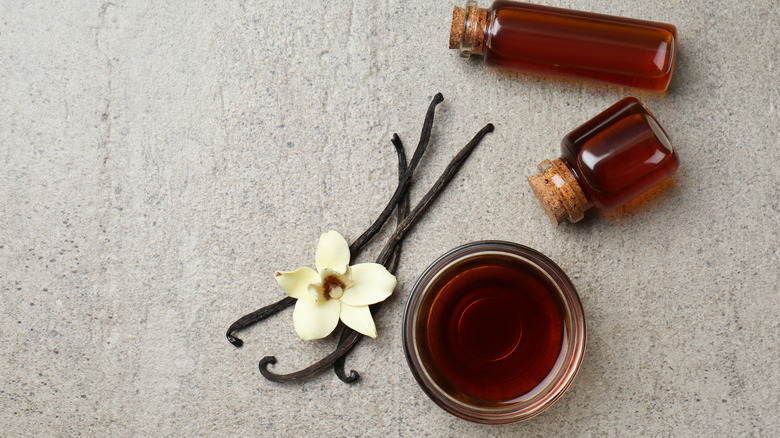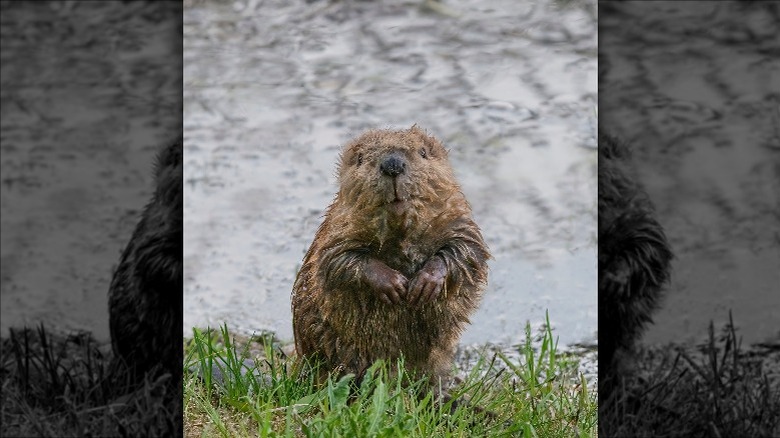There Probably Isn't Castoreum In Your Vanilla. Here's Why
If you know of castoreum and are worried about it being in your vanilla, you probably know about it as one thing: beaver butt juice. That's how it is introduced with headlines like Vice's "A History of Flavoring Food with Beaver Butt Juice," All Recipes' "Is There Beaver Goo in Your Artificial Vanilla Extract?" and HuffPost's "Is Beaver Butt Really Used To Flavor Your Dessert?"
In fairness, very few people want to be biting into a beaver's rear end when celebrating a birthday with their favorite vanilla-flavored cake. There are two things to know. First, castoreum doesn't come from a beaver's butt. It comes from the castor gland that is located next to a beaver's anal glands. Second, if that doesn't make you feel better, almost no artificial vanilla manufacturers use castoreum.
In the Vice article, food historian Nadia Berenstein wrote that in the 20th century, food manufacturers took note from perfume makers and used castoreum in products. Castoreum has a very appealing scent and can still be found in perfumes. In food, however, it fell out of fashion in the 1980s. While price and potential disgust may have contributed, the reason companies turned away from it was that castoreum is apparently not kosher.
So now artificial vanilla is made from a different, synthetic flavoring. To put it in perspective, Daily Science Journal states that about 8,000 metric tons of vanillin is produced annually, while castoreum production reaches just under 300 pounds. There's little chance of mistakenly eating something from a beaver gland.
The beaver is the point
Fortunately, the beaver population is not being liquidated to layer the icing of Carvel's ice cream cakes. Some may want to know what this vanillin is, though. Saveur explains that vanillin, a compound mainly found in wood, makes up about 2.5% of the vanilla flavor we associate with the extract. Despite that small amount, it still accounts for the core of the flavor. Anything we will recognize as vaguely vanilla will probably have vanillin in it. Business Insider has listed "cinnamon, paper waste, pine bark, and even cow poop" as ingredients companies have tried to use as a cheap substitute to vanilla. Specifically, these ingredients can bring down the price significantly. The ingredients, however, are so multifarious that companies don't even bother listing them.
However, if you are morbidly curious to try vanilla flavoring made from castoreum. The Takeout reported in 2018 that Tamworth Distilling in New Hampshire was making bourbon flavored with the stuff. Moreover, the castoreum was the selling point. And if you take nothing else from this, remember this, any company that has used beaver glands to flavor your food will likely tell you. Apparently, such a foodie ingredient is the selling point.

